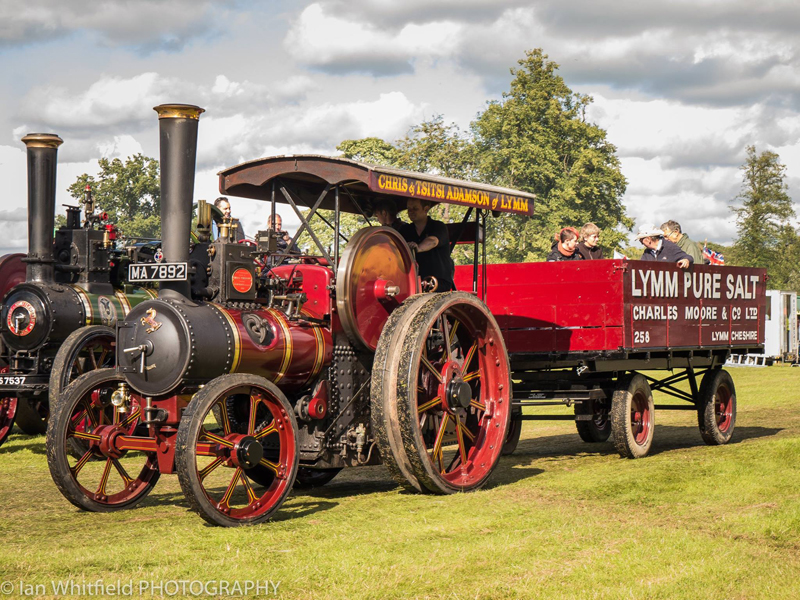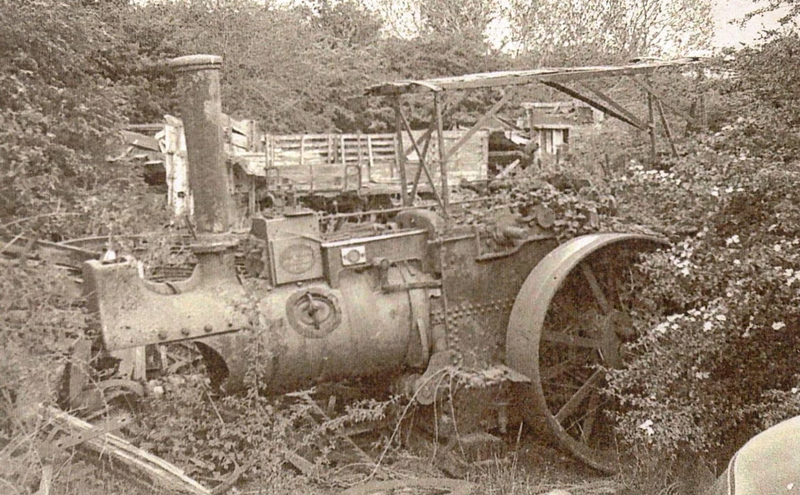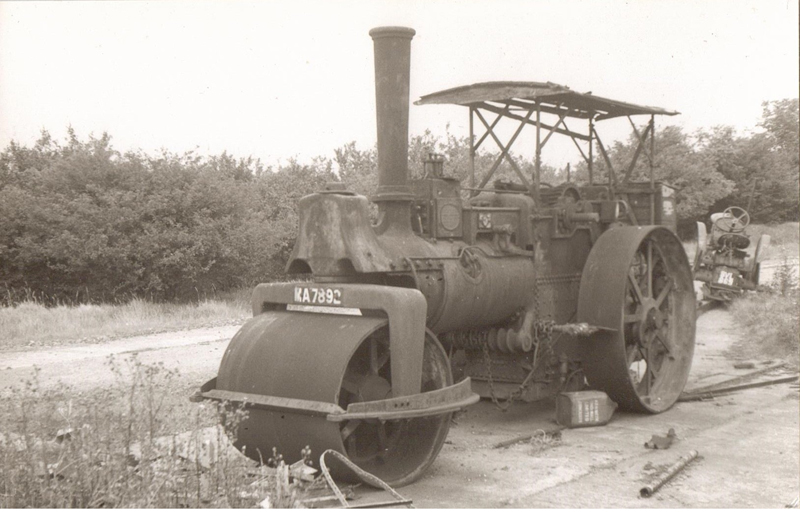Victorians had a profound optimism for the future and pride in their accomplishments; you only have to look at the surviving examples of their engineering to see this. The fact that so many examples survive and remain in working order is a testament to their skill and dedication.
Steam power drove the Industrial Revolution, and in the case of traction engines this is meant quite literally. Originally produced to work on farms and fairgrounds, to build roads and move heavy objects, they were truly the original multi-purpose vehicle. Whether or not the Victorians would have expected to see some of the actual engines they produced still operating is another matter! I imagine they would have looked on in some amazement if they knew that with all the modern, clean and comfortable technology of today, there are still people who slave away over their machines getting covered in oil and soot.
There are many reasons people are drawn to steam engines. Maybe their family has passed down an engine over the years, or a childhood fascination has taken root and led them to restoring one from a wreck. In my own case, I was apprenticing to a friend who owns a 1923 steamroller and I learned that Vanguard was coming up for sale. She’s an Aveling & Porter built in 1893 with a rich and varied history, so I took the plunge and became the proud owner.
Whatever sparks someone’s interest, I like to think it’s because in many ways these vehicles appear and act like they are alive. The moment you light a fire an engine will take on a personality, it will emit strange sounds and smells and will require coaxing to life. Many is the owner that believes an engine will tell them off for getting lax with the polishing cloth or neglecting it while frequenting a public house. While this may sound a bit fanciful, there have been times that I seem to have been punished by my engine with a hard day’s work after perhaps not giving her the required TLC while firing up.
So, let’s imagine you fancy having a go. It’s very sociable, as most engines require two people to operate them—a driver and a steersperson. Engine owners are a friendly bunch and are normally looking for apprentices to learn the ropes with the reward of steering to events.
This is the first skill you must learn—these vehicles were built in the age or horse and cart, and so the need for precise steering was not really a concern. However, the newcomer’s first experience of steam on a 21st century road is usually rather terrifying! The first trip often results in zigzagging down the highway and the rapid realisation that 8mph can feel like 80 when you have over 40 turns of the steering wheel between full left and right.

With most modern cars weighing less than the rear wheel of a traction engine, the avoidance of a collision is very important… for the car. It is noticeable that people tend to laugh at the top speeds of these engines, most barely making it into double figures. This attitude is usually rapidly modified following the first experience on the road, with the new steersperson often pleading for the driver to slow down.
However, simply steering is not enough. The skill that must be honed—and which is different for each engine—is in the driving. The driver must keep the fire going, make sure there is always water in the boiler, and control the speed and braking of the engine.
Hills are a particular hazard; if you are to climb then you must prepare your fire well in advance to make sure you have the steam to make it to the top. Descending a hill requires the greatest care of all, as you must control the speed and not allow a runaway (engine brakes are basic at best). On very steep hills, it’s sometimes a sensible precaution to have a person walking next to the engine ready to throw a chock under the wheel if required.
The reality is that every journey is an adventure. You quickly learn that the fire will go out if you loiter in the pub too long, or that a top speed of 10mph in no way means you will travel 10 miles in an hour. You also learn that car drivers fall into two categories: the friendly ones who are interested, happy and wave at you; and the impatient ones, who nip in front of you at traffic lights blissfully unaware of our stopping distance and that their vehicle might as well be made of tin foil.
It is an exciting and rewarding hobby that builds team work, leadership and practical skills in operation, as well as science, technology, engineering and maths in the workshop. I would recommend it to anyone who’s not afraid of a bit of oil and wants to get really hands-on with heavy engineering.

So, the next time you see an engine on the road bear in mind that it’s a great machine with a rich history, not only existing long before your car but will probably still be around long after its been scrapped and turned into razor blades. Vanguard was 10 years old when the Wright brothers made their first powered air flight and 19 years old by the time the Titanic sank. While all three vehicles are technically in existence, only one still rolls on.
An engine owner never really owns an engine but rather is the custodian of it, preserving a piece of living history and protecting it for future generations to enjoy.
All images provided by Chris Adamson.
3 comments on “The attraction of steam”
Comments are closed.


Very informative!!! I now have an idea of all this and I now know why” Christopher” the writer loves steam engines.
As a steam engine owner also, I can equate with all that Chris has said, and do heartily agree with him..
We are only custodians of a piece of historical Victoriana, which helped make Great Britain ‘Great’ !!!!
A great read and good to see the pictures of Vanguard as a roller and in her pre-restoration state.
The road wagon using the rail wagon inspired paintwork is real class nd a great way to get get people interested in another aspect of local history.